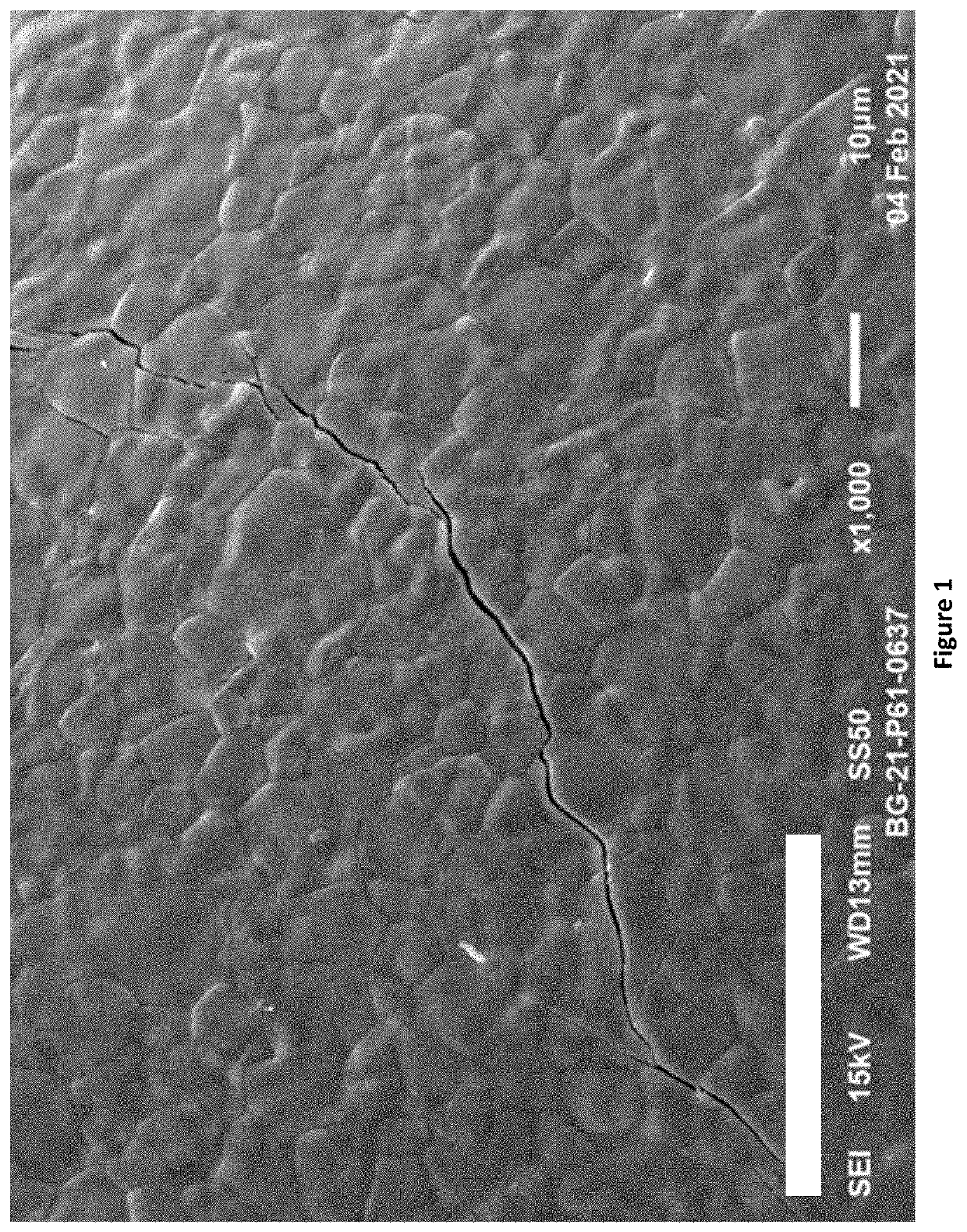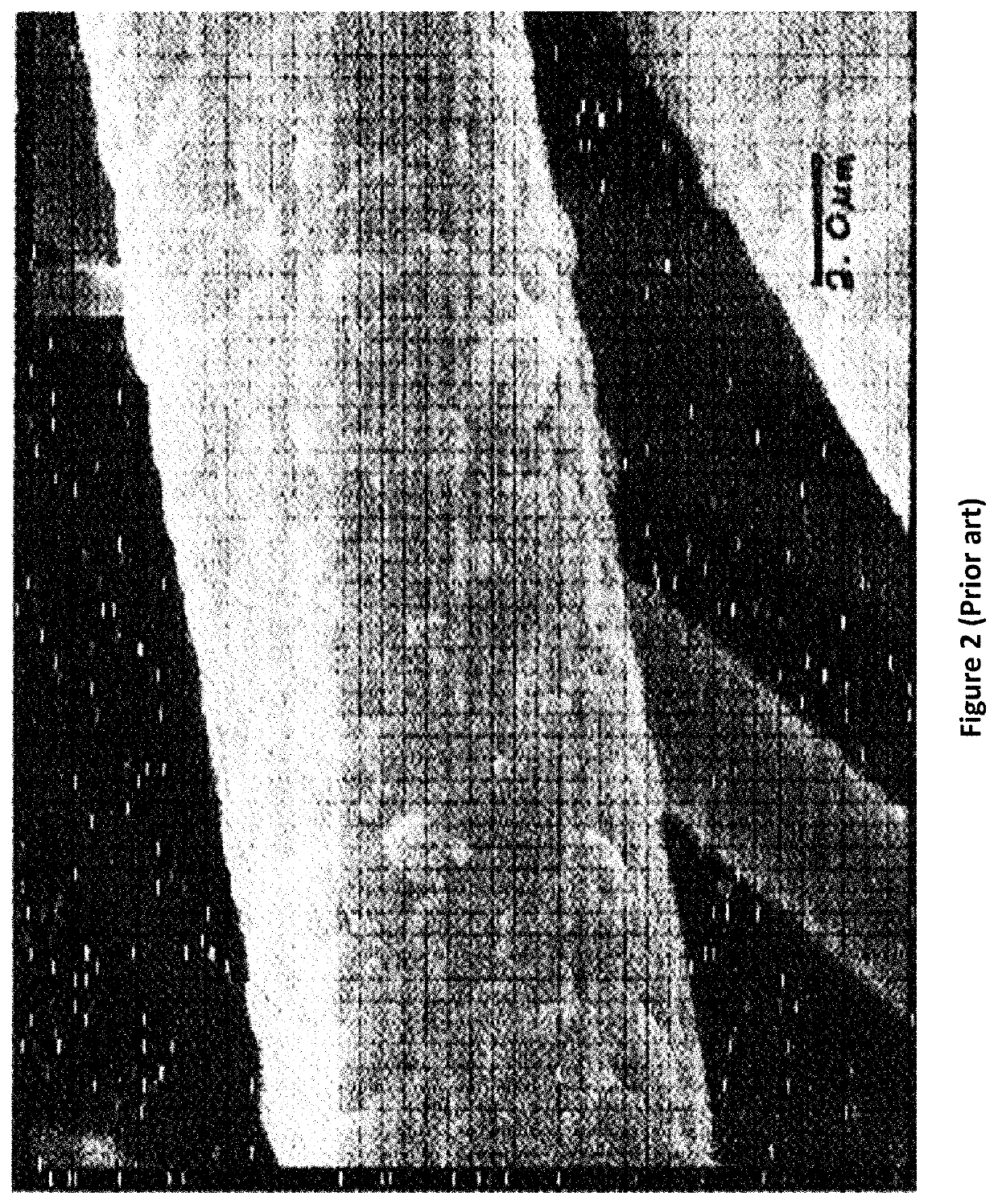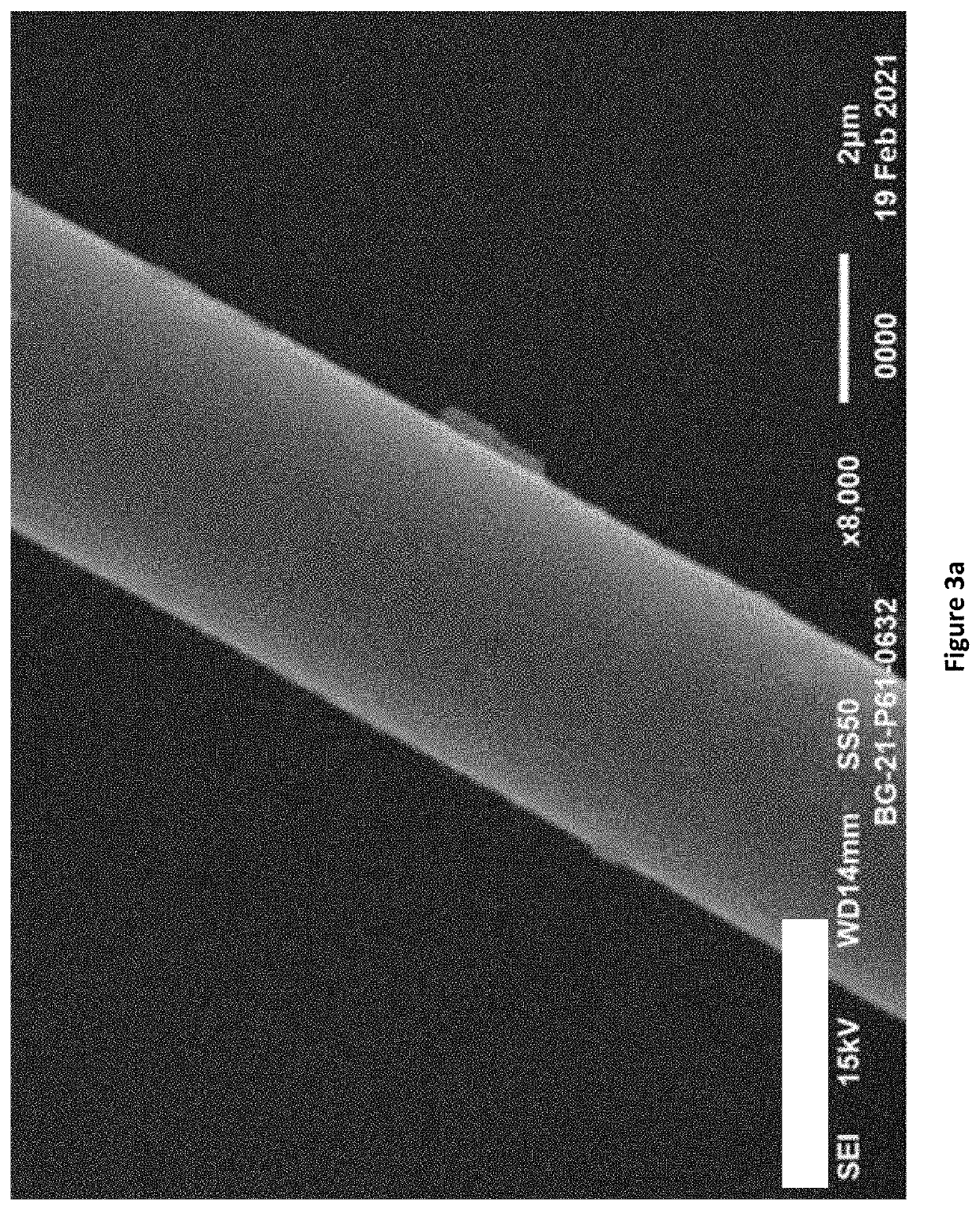Thermal Insulation
a technology of thermal insulation and thermal insulation layer, which is applied in the field of thermal insulation, can solve the problems of high use temperature limit of these materials, insufficient thermal insulation of these materials, and surprisingly high bio-solubility level, so as to reduce not significantly affecting the high temperature performance of the fibre, and minimise the size of the surface crystallite phase
- Summary
- Abstract
- Description
- Claims
- Application Information
AI Technical Summary
Benefits of technology
Problems solved by technology
Method used
Image
Examples
Embodiment Construction
[0143]Fibres according to the disclosure and comparative fibres described herein have been produced at either the French production facilities in Saint Marcellin, France by spinning [made from the melt by forming a molten stream and converting the stream into fibre by permitting the stream to contact one or more spinning wheels]; or at the applicant's research facilities in Bromborough, England by spinning or alternatively by blowing [fibres made from the melt by forming a molten stream and converting the stream into fibre by using an air blast directed at the stream]. The disclosure is not limited to any particular method of forming the fibres from a melt, and other methods [e.g. rotary or centrifugal formation of fibres; drawing; air jet attenuation] may be used. The resultant fibres were then fed onto a conveyor belt and entangled by needling methods, as known in the art.
[0144]The raw materials used to produce the inorganic fibres of a preferred embodiment of the present disclosu...
PUM
 Login to View More
Login to View More Abstract
Description
Claims
Application Information
 Login to View More
Login to View More - R&D
- Intellectual Property
- Life Sciences
- Materials
- Tech Scout
- Unparalleled Data Quality
- Higher Quality Content
- 60% Fewer Hallucinations
Browse by: Latest US Patents, China's latest patents, Technical Efficacy Thesaurus, Application Domain, Technology Topic, Popular Technical Reports.
© 2025 PatSnap. All rights reserved.Legal|Privacy policy|Modern Slavery Act Transparency Statement|Sitemap|About US| Contact US: help@patsnap.com



